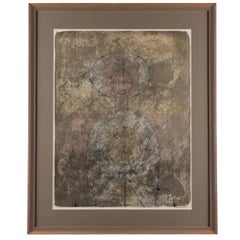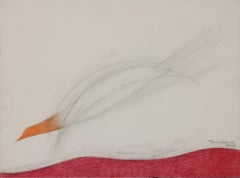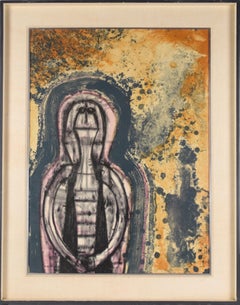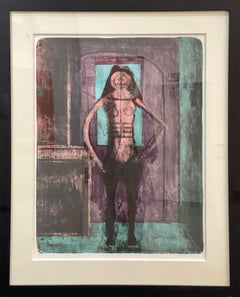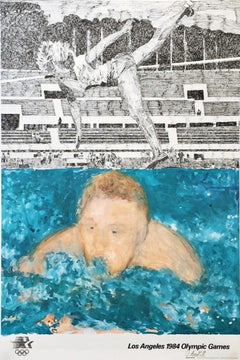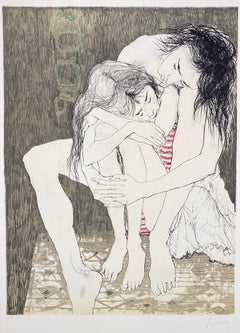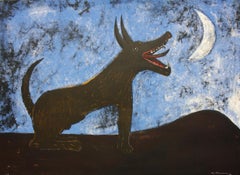Rufino Tamayo Art
Rufino Tamayo was born in Oaxaca, Mexico, in 1899 to parents Manuel Arellanes and Florentina Tamayo. Tamayo was active in the mid-20th century in Mexico and New York, painting figurative abstraction with surrealist influences. Although Tamayo studied drawing at the Academy of Art at San Carlos as a young adult, he became dissatisfied and eventually decided to study on his own.
Late 20th Century Contemporary Rufino Tamayo Art
Lithograph
1960s Minimalist Rufino Tamayo Art
Paper, Crayon, Graphite
1960s Post-Modern Rufino Tamayo Art
Paper, Lithograph
1960s Abstract Rufino Tamayo Art
Color, Lithograph
1980s Expressionist Rufino Tamayo Art
Lithograph
Mid-20th Century Modern Rufino Tamayo Art
Lithograph
Mid-20th Century Modern Rufino Tamayo Art
Lithograph
1970s Modern Rufino Tamayo Art
Etching, Aquatint
Mid-20th Century Modern Rufino Tamayo Art
Lithograph
Mid-20th Century Modern Rufino Tamayo Art
Lithograph
Mid-20th Century Modern Rufino Tamayo Art
Lithograph
Mid-20th Century Modern Rufino Tamayo Art
Etching
Mid-20th Century Modern Rufino Tamayo Art
Lithograph
Mid-20th Century Modern Rufino Tamayo Art
Lithograph
1980s Contemporary Rufino Tamayo Art
Lithograph
Late 20th Century Expressionist Rufino Tamayo Art
Lithograph
1980s Contemporary Rufino Tamayo Art
Lithograph, Screen, Woodcut
21st Century and Contemporary Abstract Expressionist Rufino Tamayo Art
Ink, Pencil
1970s Contemporary Rufino Tamayo Art
Paper, Lithograph
1980s Modern Rufino Tamayo Art
Paper, Ink, Pencil
1940s Modern Rufino Tamayo Art
Paper, Lithograph
1950s Modern Rufino Tamayo Art
Lithograph
1950s Abstract Expressionist Rufino Tamayo Art
India Ink, Handmade Paper
1950s Modern Rufino Tamayo Art
Lithograph
Late 20th Century Expressionist Rufino Tamayo Art
Lithograph
Mid-20th Century Expressionist Rufino Tamayo Art
Lithograph, Pencil
Mid-20th Century Modern Rufino Tamayo Art
Other Medium
1970s Surrealist Rufino Tamayo Art
Archival Paper, Lithograph
1970s Surrealist Rufino Tamayo Art
Archival Paper, Lithograph
1960s Abstract Impressionist Rufino Tamayo Art
Lithograph
1970s Contemporary Rufino Tamayo Art
Lithograph
1970s Contemporary Rufino Tamayo Art
Lithograph
1970s Contemporary Rufino Tamayo Art
Rufino Tamayo art for sale on 1stDibs.
Artists Similar to Rufino Tamayo
- 1stDibs ExpertFebruary 13, 2024The type of art that Rufino Tamayo painted was primarily figurative abstraction. Although Tamayo studied drawing at the Academy of Art at San Carlos as a young adult, the Mexican artist became dissatisfied and eventually decided to study on his own. Some of his most famous works include Watermelons, Three People, Moon and Sun, Woman in Grey, The Troubadour and Moon Dog. Find a variety of Rufino Tamayo art on 1stDibs.
- 1stDibs ExpertApril 5, 2022Mexican painter Rufino Tamayo had over 1300 oil paintings. He also worked in a variety of other mediums, but most of his work was done with vibrantly colored oil paint and this is the highlight of his legacy. Browse an array of authentic Rufino Tamayo pieces and prints on 1stDibs.
